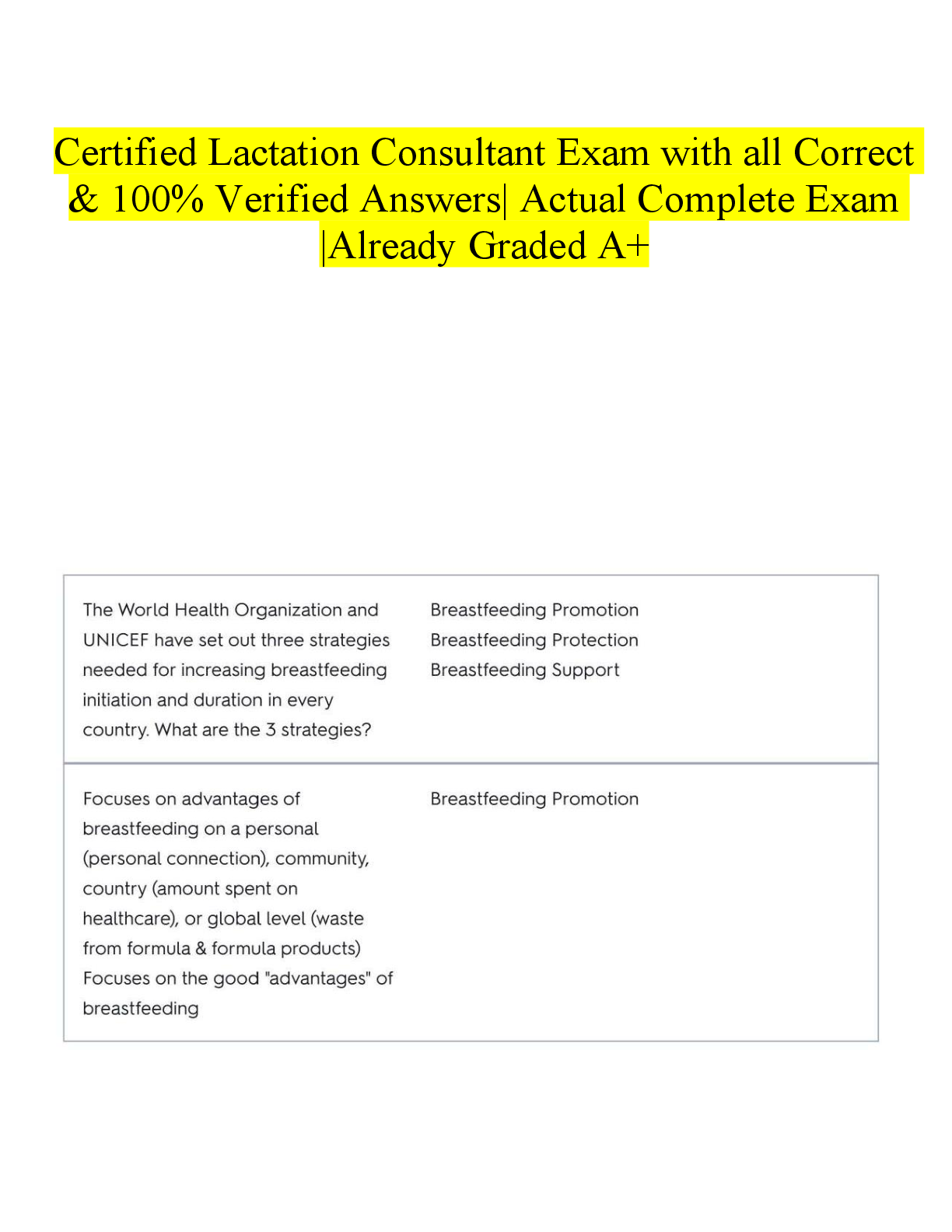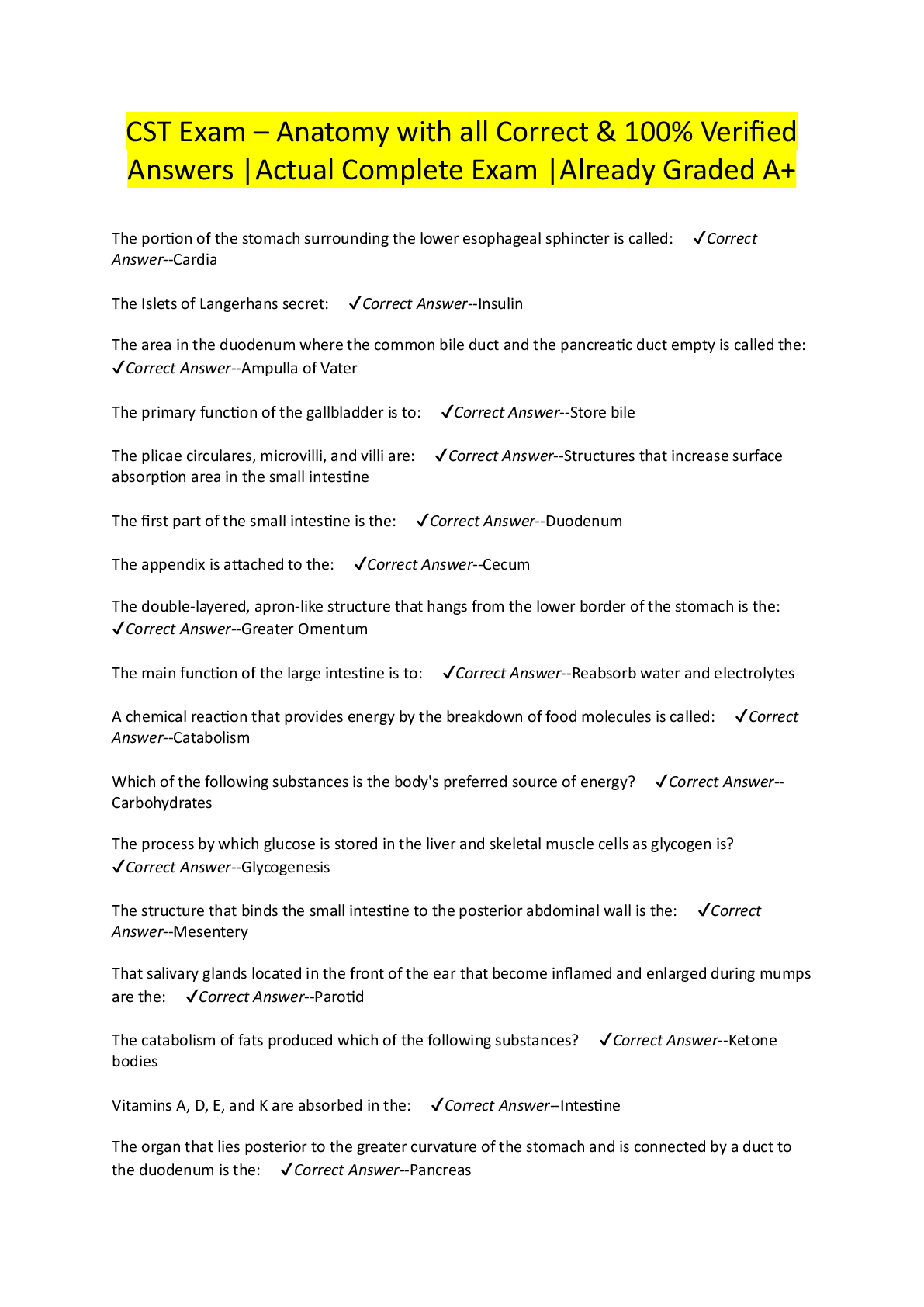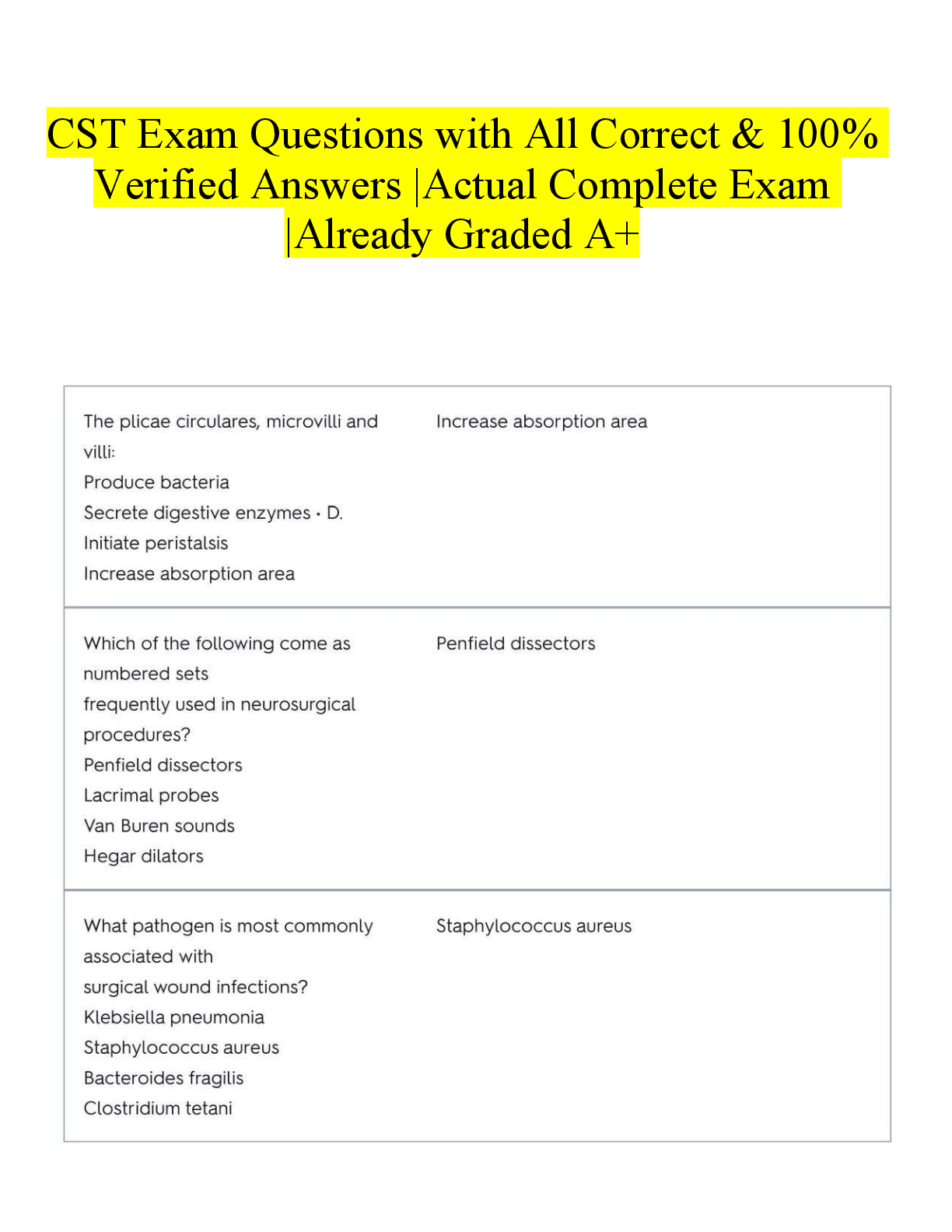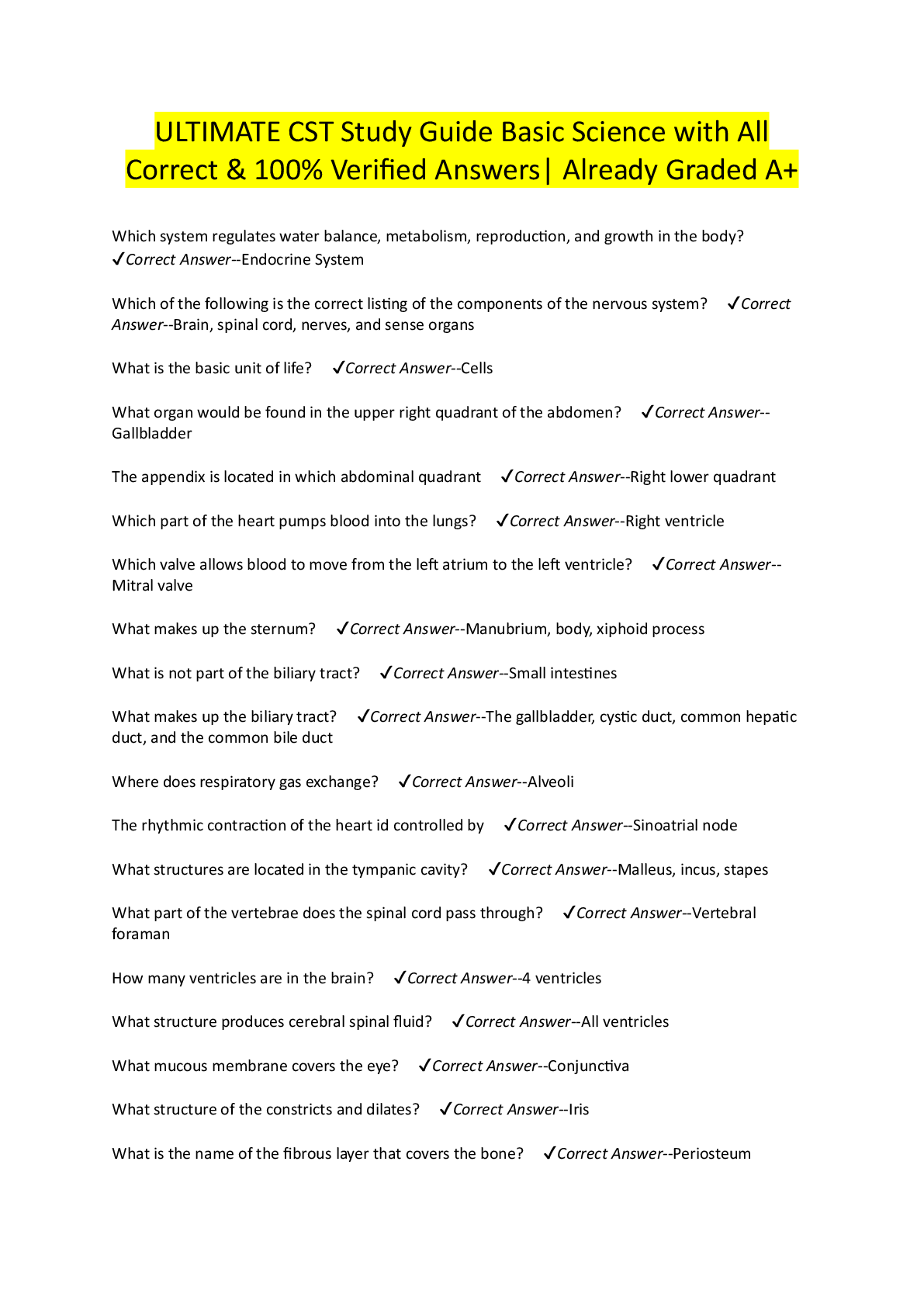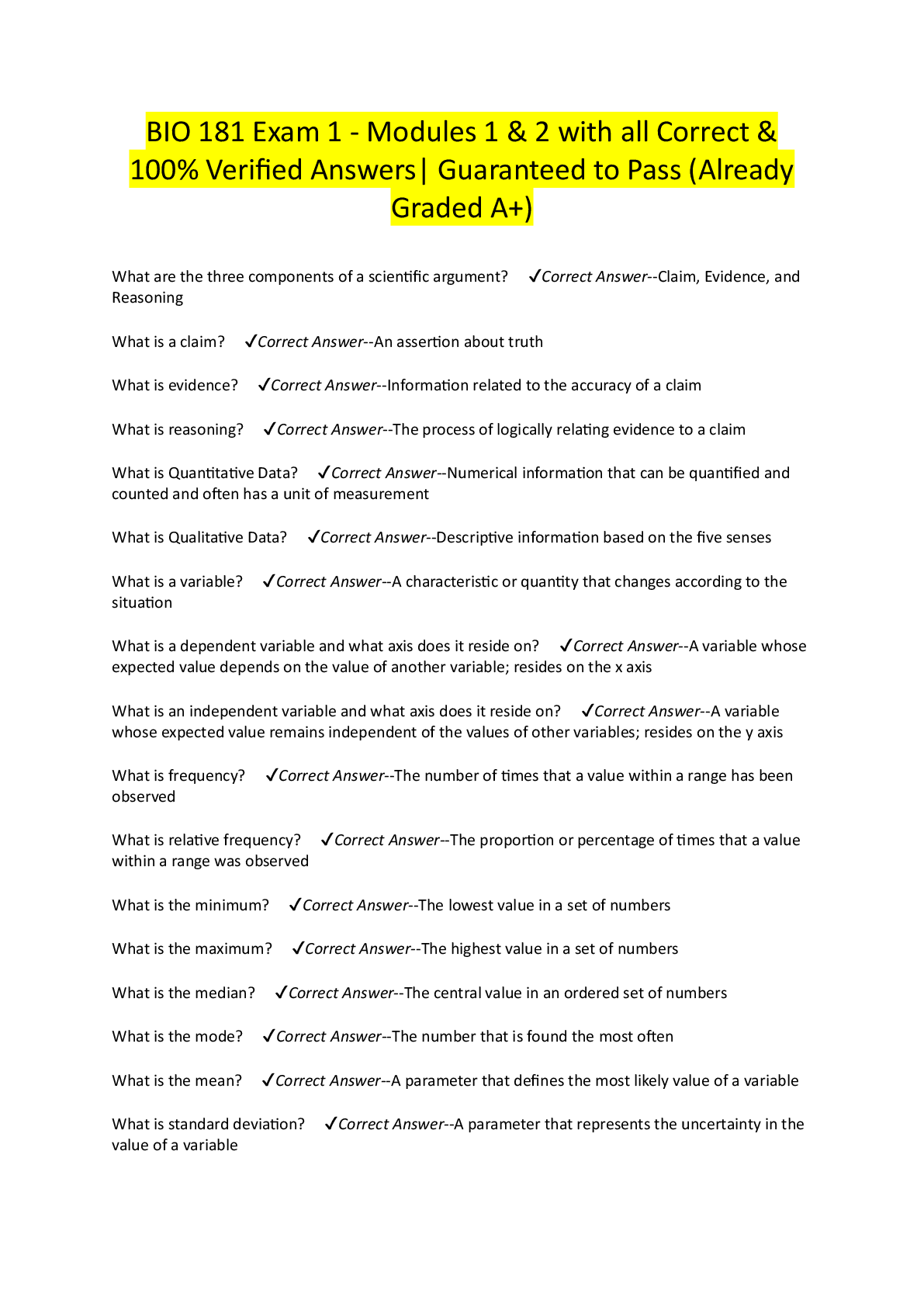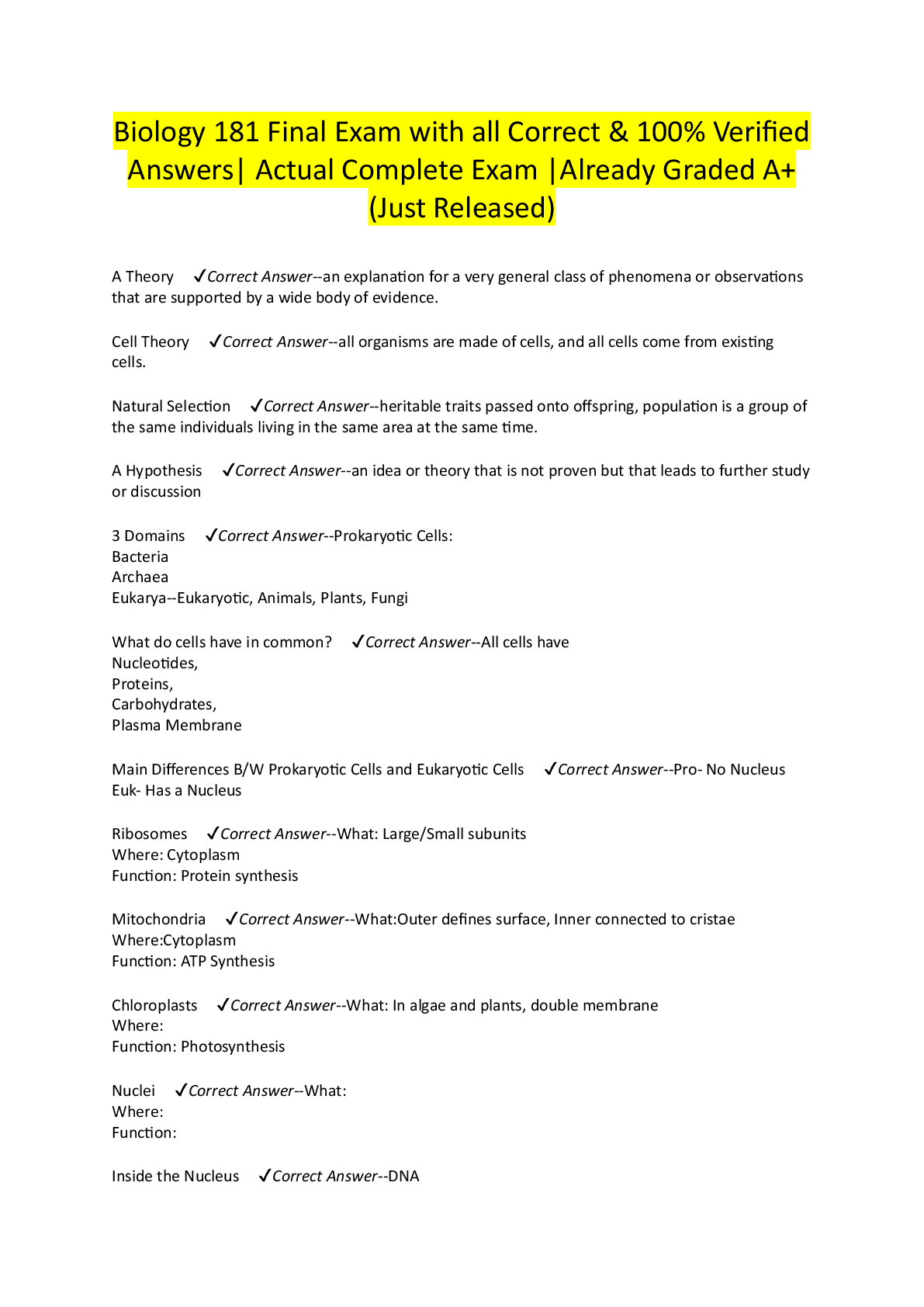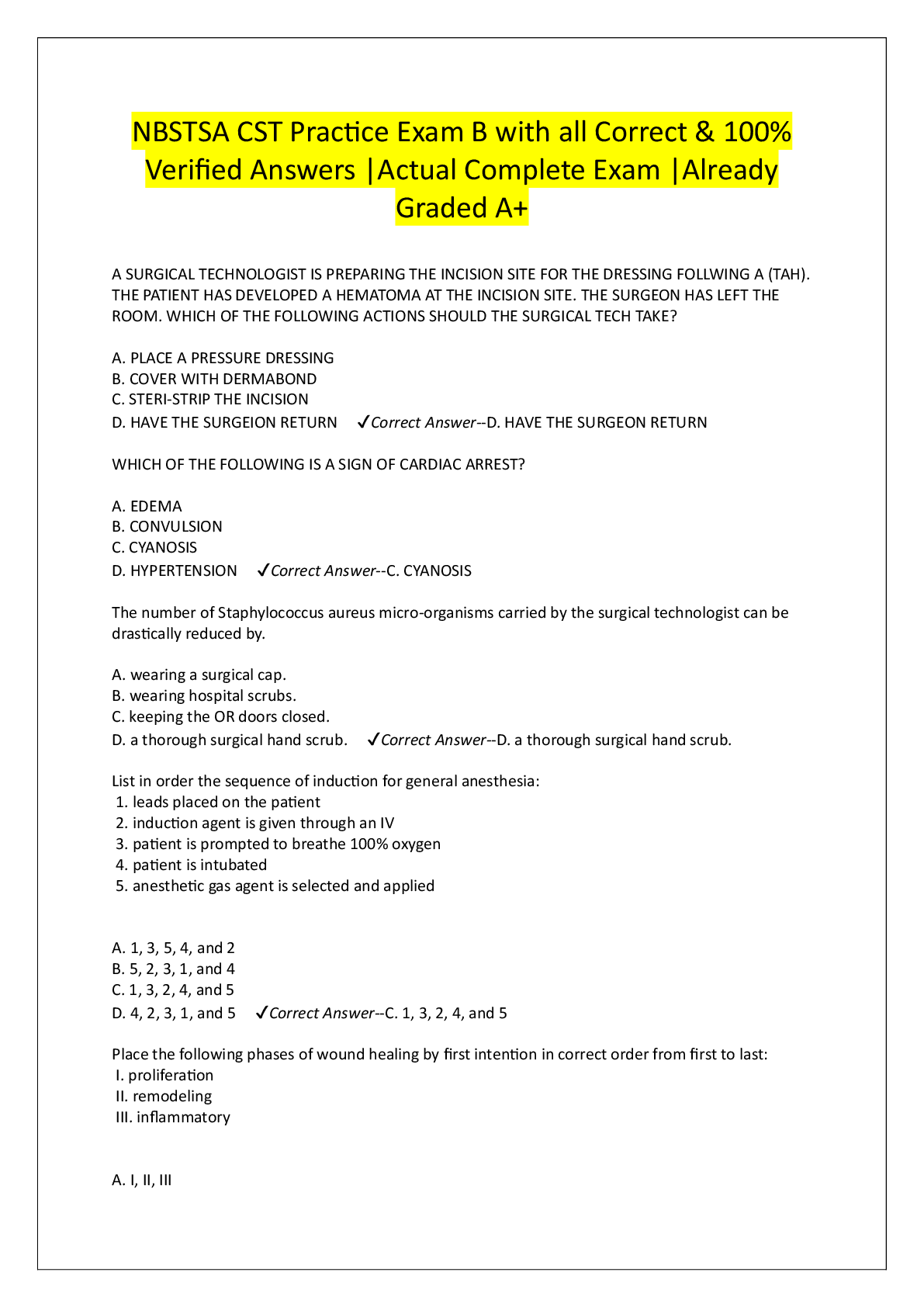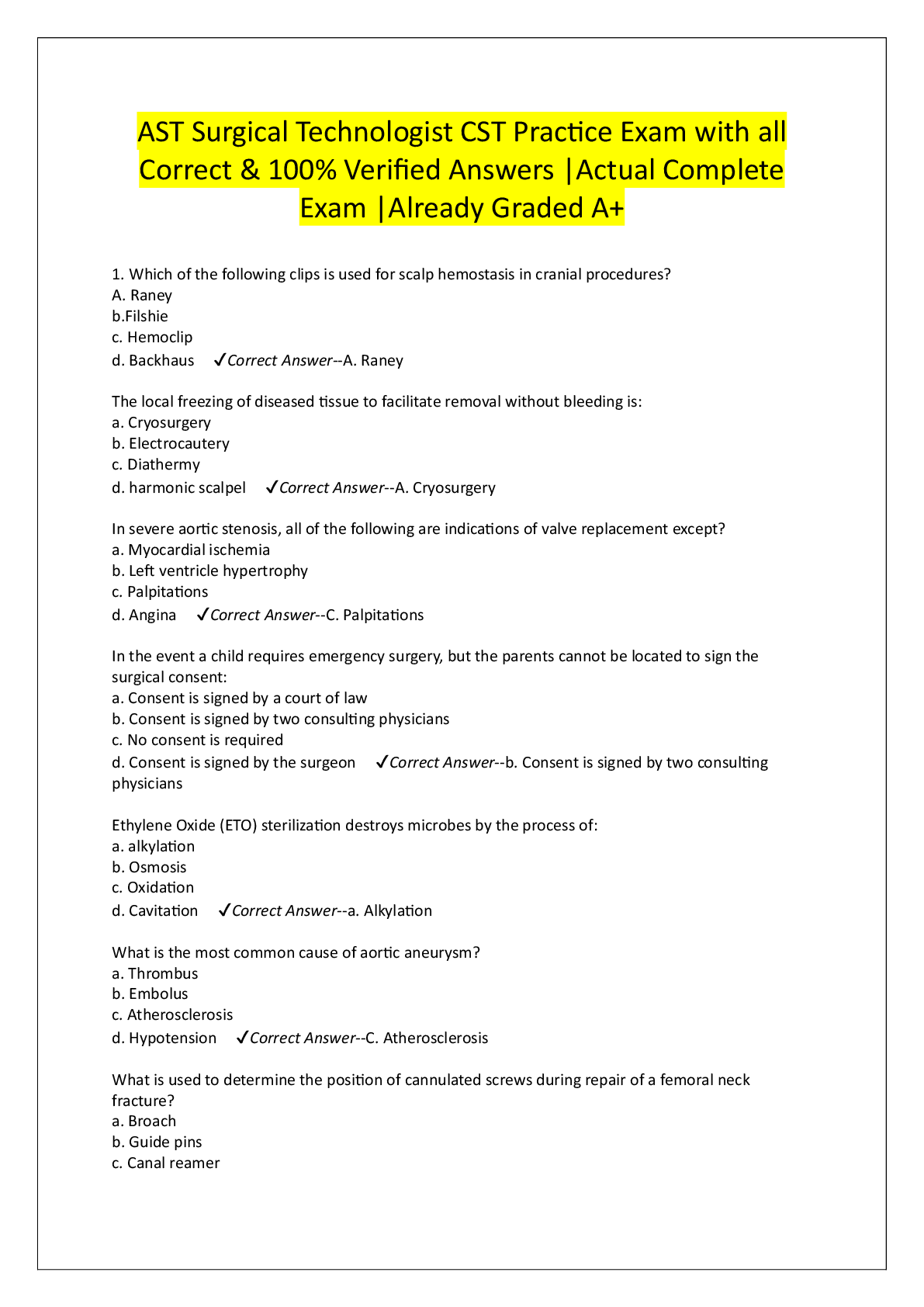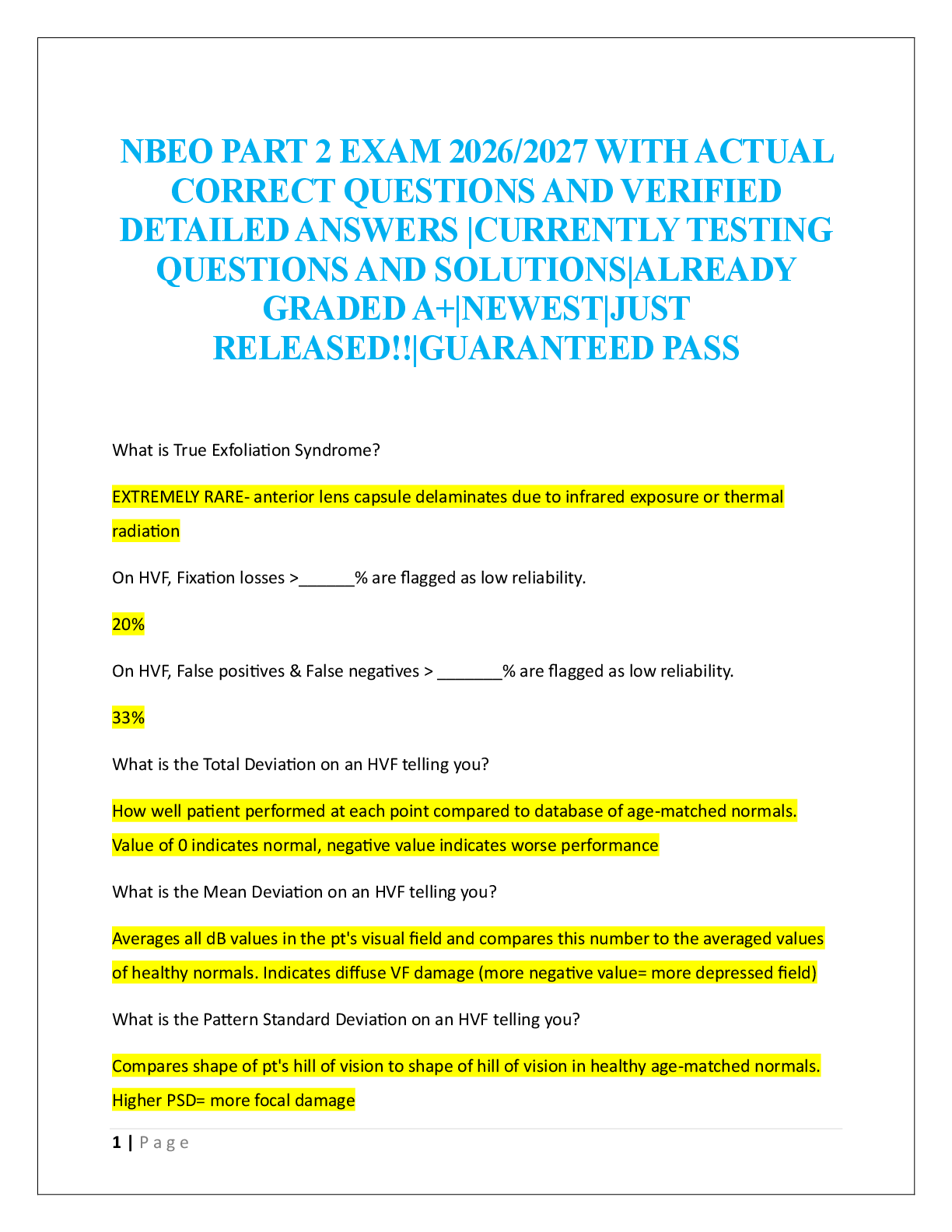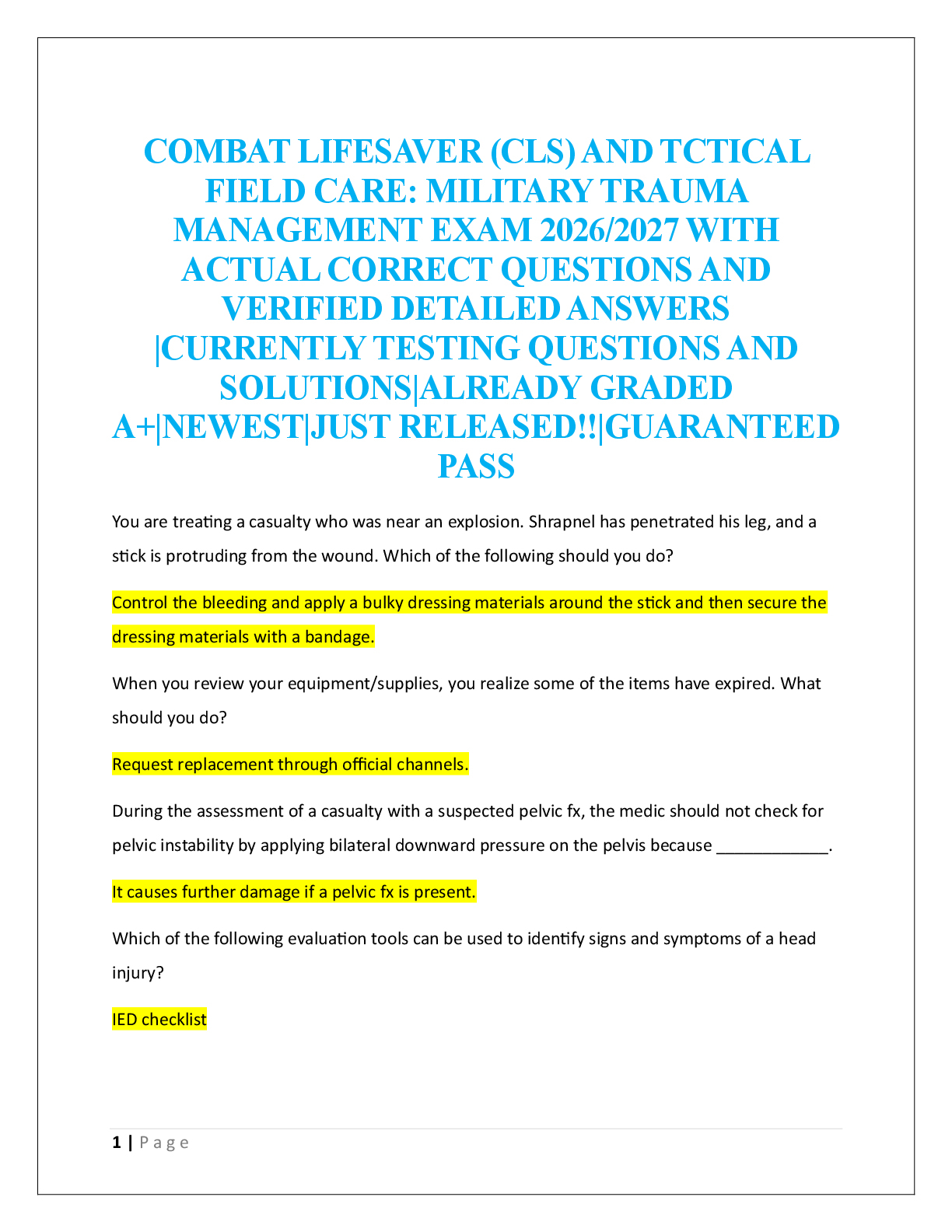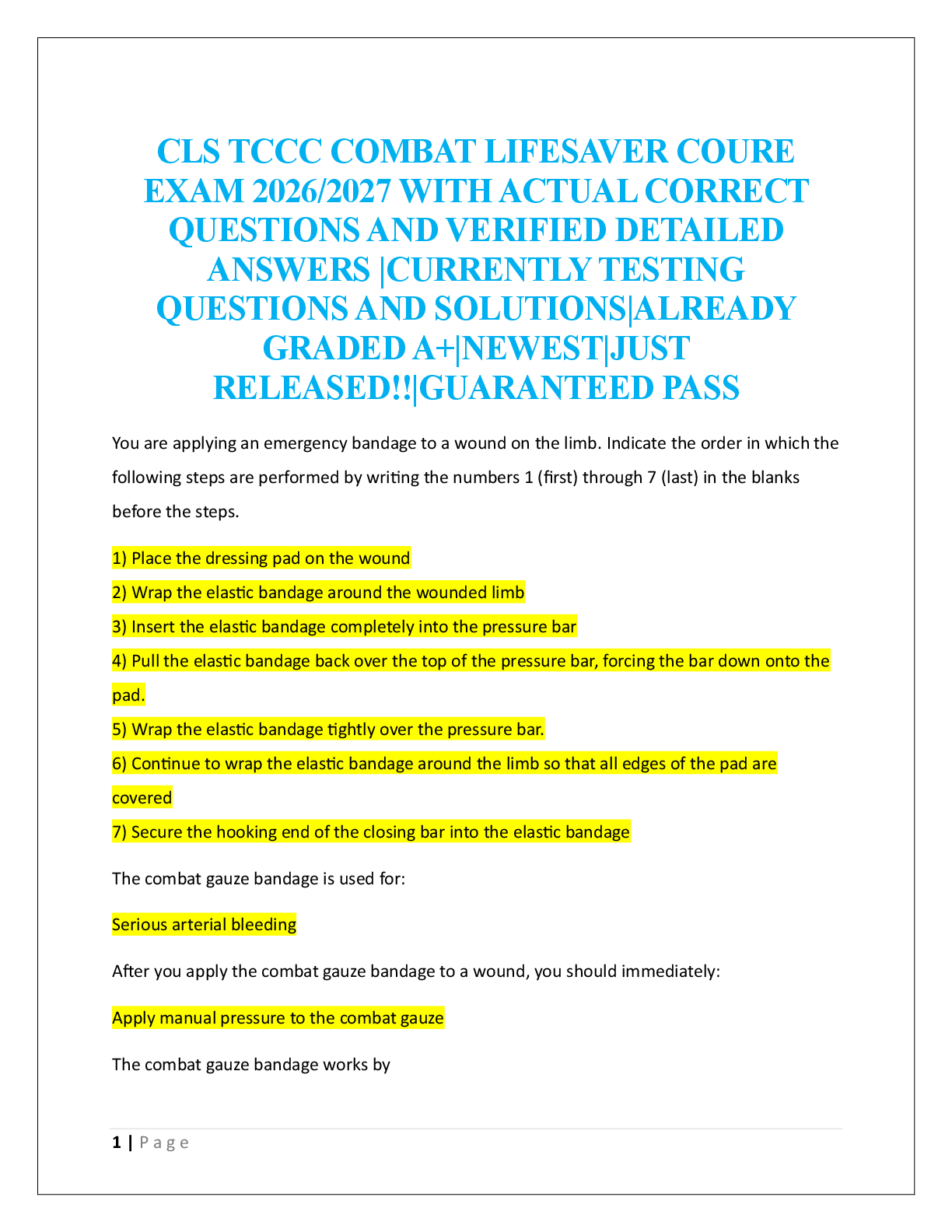*NURSING > EXAM > NURSING 216 Nclex Practice questions and answers from 2017-2020.A Plus Exam questions. (All)
NURSING 216 Nclex Practice questions and answers from 2017-2020.A Plus Exam questions.
Document Content and Description Below
NURSING 216 Nclex Practice questions and answers from 2017-2020.A Plus Exam questions. 1. The nurse knows that which statement by the mother indicates that the mother understands safety precautions ... with her four month-old infant and her 4 year-old child? A) "I strap the infant car seat on the front seat to face backwards." B) "I place my infant in the middle of the living room floor on a blanket to play with my 4 year old while I make supper in the kitchen." C) "My sleeping baby lies so cute in the crib with the little buttocks stuck up in the air while the four year old naps on the sofa." D) "I have the 4 year-old hold and help feed the four month-old a bottle in the kitchen while I make supper." Review Information: The correct answer is D: "I have the four year-old hold and help feed the four month-old a bottle in the kitchen while I make supper." The infant seat is to be placed on the rear seat. Small children and infants are not to be left unsupervised. Infants are to be placed on their "back when they go back" to sleep or are lying in a crib. A 4 year-old could assist with the care of an infant with proper supervision. This enhances bonding with the infant and the developmental needs of the preschooler to "help" and not feel left out. 2. Upon completing the admission documents, the nurse learns that the 87 year-old client does not have an advance directive. What action should the nurse take? A) Record the information on the chart B) Give information about advance directives C) Assume that this client wishes a full code D) Refer this issue to the unit secretary Review Information: The correct answer is B: Give information about advance directives For each admission, nurses should request a copy of the current advance directive. If there is none, the nurse must offer information about what an advance directive implies. It is then the client’s choice to sign it. In option 1 just recording the information is not sufficient. In option 3 the nurse should not assume that the client has been informed of choices for emergency care. In option 4 this represents an inappropriate delegation approach. 3. A nurse administers the influenza vaccine to a client in a clinic. Within 15 minutes after the immunization was given, the client complains of itchy and watery eyes, increased anxiety, and difficulty breathing. The nurse expects that the first action in the sequence of care for this client will be to A) Maintain the airway B) Administer epinephrine 1:1000 as ordered C) Monitor for hypotension with shock D) Administer diphenhydramine as ordered Review Information: The correct answer is B: Administer epinephrine 1:1000 as ordered .All the answers are correct given the circumstances. The correct sequence of care is to administer the epinephrine, then maintain airway. In the early stages of anaphylaxis, when the patient has not lost consciousness and is normatensive, administering the epinephrine and then applying the oxygen, watching for hypotension and shock are later responses. The prevention of a severe crisis is maintained by using diphenhydramine. 4. Which of these children at the site of a disaster at a child day care center would the triage nurse put in the "treat last" category? An infant with intermittent buldging anterior fontonel between crying episodes A toddler with severe deep abrasions over 98% of the body A preschooler with 1 lower leg fracture and the other leg with an upper leg fracture A school-age child with singed eyebrows and hair on the arms Review Information: The correct answer is B: A toddler with severe deep abrasions over 98% of the body .This child has the least chance of survival. Severe deep abrasions are to be thought of as second and third degree burns. The child has great risk of shock and infection combined. 5. When admitting a client to an acute care facility, an identification bracelet is sent up with the admission form. In the event these do not match, the nurse’s best action is to change whichever item is incorrect to the correct information use the bracelet and admission form until a replacement is supplied notify the admissions office and wait to apply the bracelet make a corrected identification bracelet for the client Review Information: The correct answer is C: notify the admissions office and wait to apply the bracelet The Admissions Office has the responsibility to verify the client’s identity and keep all the records in the system consistent. Making the changes puts the client at risk for misidentification. Using an incorrect identification bracelet is unsafe. Making a new bracelet on the unit is not appropriate. [Show More]
Last updated: 3 years ago
Preview 1 out of 76 pages
.png)
Buy this document to get the full access instantly
Instant Download Access after purchase
Buy NowInstant download
We Accept:

Reviews( 0 )
$12.00
Can't find what you want? Try our AI powered Search
Document information
Connected school, study & course
About the document
Uploaded On
Dec 16, 2020
Number of pages
76
Written in
All
Additional information
This document has been written for:
Uploaded
Dec 16, 2020
Downloads
0
Views
106

.png)






.png)




